Logistics Solutions: A Deep Dive into Google Maps Platform
With its impressive points of interest catalog, extensive imagery layers and global street views, Google has long led the digital map and data space. It only makes sense that Google will surge ahead as a key provider of logistics solutions and mobility.
Last-mile and on-demand solutions are the latest examples of Google’s trailblazing capabilities in the logistics and mobility space. Google Maps Platform (GMP) has helped some of the industry’s hottest players develop functionality to track drivers, optimize routes and increase order accuracy with services such as Places Autocomplete and Routes APIs.
In January 2022, Google launched a new solution to address everyday transportation challenges: On-Demand Rides and Deliveries (ODRD). This solution has been in development for years with select industry leaders and has endured stress tests involving billions of API requests in preparation for its rollout. The components help solve problems such as:
- On which side of the street is the rider located?
- What is the best vehicle for an on-demand ride or delivery?
- How can I include Google’s navigation experience within my drivers’ apps?
Then in March 2022, Google released its Last-Mile Fleet Solution (LMFS) and Cloud Fleet Routing (CFR) products. As with ODRD, these solutions provide vehicle fleets with in-app navigation and share the progress of driver journeys, focusing on the execution of pre-planned delivery days while offering flexibility to adapt to on-the-fly changes.
Businesses can now build robust execution workflows for a day’s worth of deliveries with LMFS, and CFR powers the day-to-day route planning. As a managed routing service, CFR combines lists of orders, vehicles, constraints and objectives to create the most efficient plans, including suggested routes, for an entire fleet in near-real time.
In the past, GMP was a consumption-driven API suite that often led developers to sacrifice customer experience to reduce spending and achieve more predictable API usage patterns. With the ODRD and LMFS solutions, Google shifted to a per-trip price model, enabling partners like Woolpert to spend more time understanding their own clients’ ideal customer experience and designing feature-packed solutions that leverage the full suite of APIs. Thanks to Google’s new era of mobility solutions, we all have access to delivery-focused APIs and SDKs that serve as the building blocks for customers to create their own recipes for success. This collaboration improves the customer experience with real-time journey visibility and increased on-time deliveries.
Successful product delivery not only includes customer experience, but it also encompasses the driver experience and fleet management. As labor shortages spread across industries, keeping drivers happy has become a top initiative. When drivers have the tools they need to succeed, such as easy-to-use, in-app guides and navigation, and faster, more efficient routes, they realize increased earning potential and overall job satisfaction.
Fleet management is critical for carrying out complex routing strategies that traditionally have taken home-grown solutions an unpredictable amount of time to plan (often including hours of manual labor). Thanks to Google’s mobility solutions built on APIs mainlined into Google’s Cloud infrastructure, we are seeing these same strategies implemented in a matter of just seconds. This horsepower enables fleet operators to keep route plans relevant by adjusting constraints, incorporating live field conditions (traffic) and rapidly resolving problems on the fly, all day long.
These three solutions are tied together with Google’s Fleet Engine serving as the glue. This backend service is responsible for managing near-real-time trips and vehicle statuses. It handles transactions between the Driver and Consumer SDKs and the backend—which can communicate with Fleet Engine through REST or gRPC calls.
I recently attended the Food On Demand conference, which revolved around the food service industry and how restaurants are innovating their offerings and experiences. The event covered everything from branding to that sweet last mile, demonstrating the benefits of these new mobility solutions in action. Delivery services were a big topic of conversation as restaurant owners find themselves solely dependent on their own fleets or forced into delivery relationships with select, established players (for better or for worse).
There is a desire among many brands currently tied to established delivery providers to diversify their delivery options and remove their reliance on high-fee services. Some restaurants I spoke with didn’t have the engineering team to build their own solutions or wanted customization and data ownership, so they opted to purchase delivery disruptors that are gaining popularity among customers. With Google’s mobility solutions now available, restaurants can meet their customer’s high expectations for delivery while the brands find the model(s) best-suited for the business.
In a world where so many companies across multiple industries want to improve both the delivery and routing experience for employees and customers, it makes sense for companies to find new solutions to meet this need. Google has achieved an incredible venture in creating this full solution suite: Cloud Fleet Routing, On-Demand Rides and Deliveries and Last-Mile Fleet Solution. Google is developing a holistic mobility experience, providing developers with better building blocks to create new, powerful solutions.


